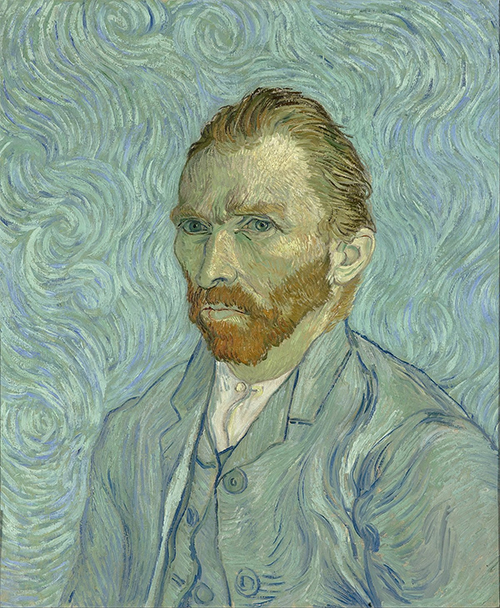Van Gogh is widely acknowledged as one of the most significant Post-Impressionist painters. He was known for his vibrant paintings, created with vivid color and impasto technique.
Van Gogh spent 12 months in the hospital after a breakdown and cutting off part of his ear with a razor. He could only paint portraits of himself and landscapes outside his studio window. During his greatest anguish, he created numerous masterpieces, including Starry Night. Several decades later, his painting is thought to depict one of the hardest ideas and unresolved physics problems.
The Starry Night by Van Gogh
Starry Night is an illustrative landscape in motion. The stillness of the town is in stark contrast to the whirling fury of the sky. Van Gogh’s impasto method, or thickly applied colors, gives a rhythmic effect. Van Gogh conveyed the motion of light via a series of small, circling brushstrokes. The brain quickly sees the blue or black contrast and the yellow or white contrast. However, since the colors aren’t blended, the artwork seems to pulse, flicker, and radiate strangely. The night sky is depicted using circular brushstrokes to depict the clouds and starry eddies.
Van Gogh and the other impressionists tried new painting techniques to depict light and luminance. Our visual brain blends when faced with two regions of different colors but with the same brightness. However, we sense complimentary hues separately.
A Whirlpool Galaxy
Anglo-Irish astronomer William Parsons commissioned the construction of the Leviathan of Parsonstown, a six-ton enormous telescope, in 1845. It remained the biggest telescope in the world until 1918. While exploring the hazy Irish sky, he discovered peculiar spiral patterns, including that of M51. He then created sketches of these nebulas.
The gorgeous spiral galaxy M51 has long, flowing arms that look like a sweeping spiral staircase. These spiral arms of M51, popularly known as the Whirlpool Galaxy, are vital to producing new star clusters. The prominence of one M51 arm comes from the small, yellowish galaxy NGC 5195 at its end.
The spiral nebulae M51 won widespread acclaim throughout Europe. In retrospect, many have seen parallels between it and Van Gogh’s iconic Starry Night.
The Unsolved Physics Problem
Andrey Kolmogorov, a Russian mathematician, produced ground-breaking work on turbulence in fluid dynamics. Andrey eventually applied these findings to studying planetary motion and the turbulent flow of air from a jet engine. However, how turbulent flow operates is still one of the most pressing questions in physics.
In turbulent flow, large eddies transmit their energy to smaller eddies. The large red spot on Jupiter is an example of this, as are cloud patterns and interplanetary dust particles. In 2004, scientists saw eddies in the cloud and gas encircling a distant star, where the phenomenon reminded them of Van Gogh’s The Starry Night. Scientists found that the Kolmogorov turbulent fluid equations and Van Gogh’s paintings have a lot in common. Researchers noticed that the curves between adjacent pixels resembled fluid turbulence when the paintings were digitized. Several of Van Gogh’s works have a pattern of turbulent fluid formations. The observed pixel separation curves led to the conclusion that Van Gogh’s paintings during his era of mental agitation exhibit behaviors strikingly comparable to fluid turbulence.
Photo Attribution:
1st and featured image by https://upload.wikimedia.org/wikipedia/commons/thumb/b/b2/Vincent_van_Gogh_-_Self-Portrait_-_Google_Art_Project.jpg/1200px-Vincent_van_Gogh_-_Self-Portrait_-_Google_Art_Project.jpg
2nd image by https://www.vangoghgallery.com/img/starry_night_full.jpg

